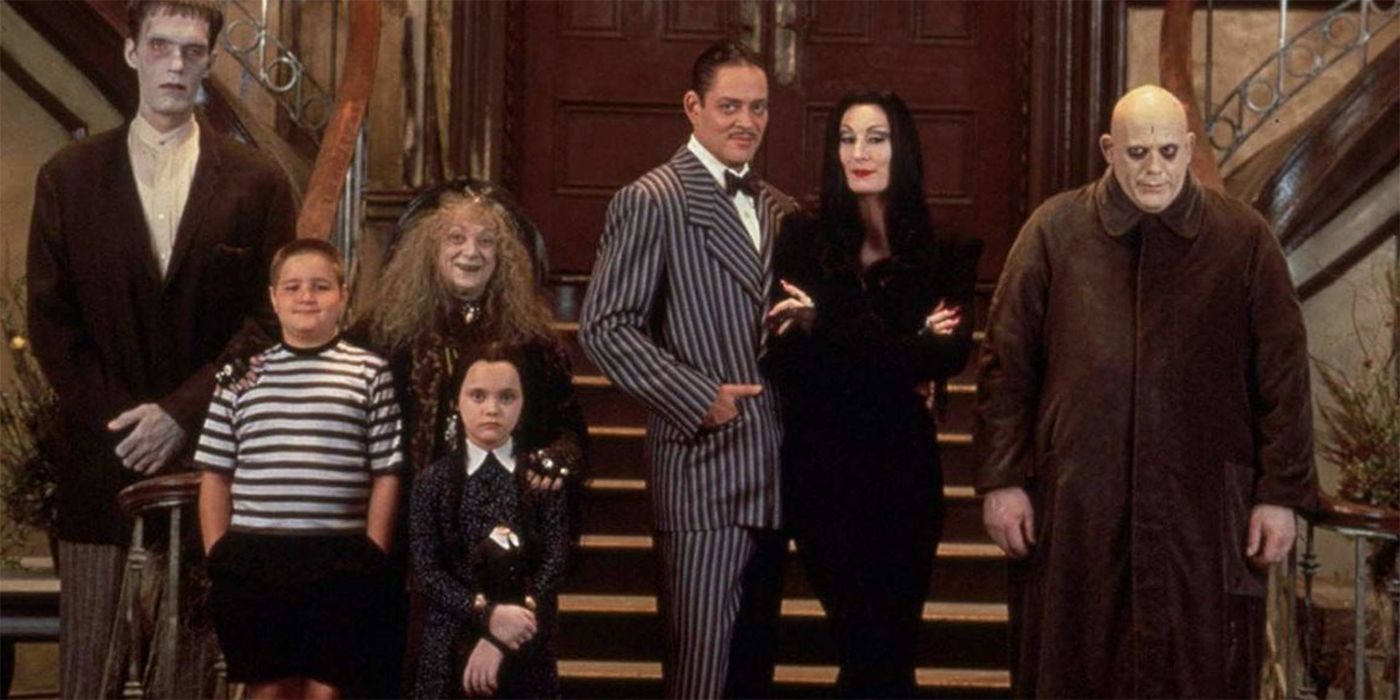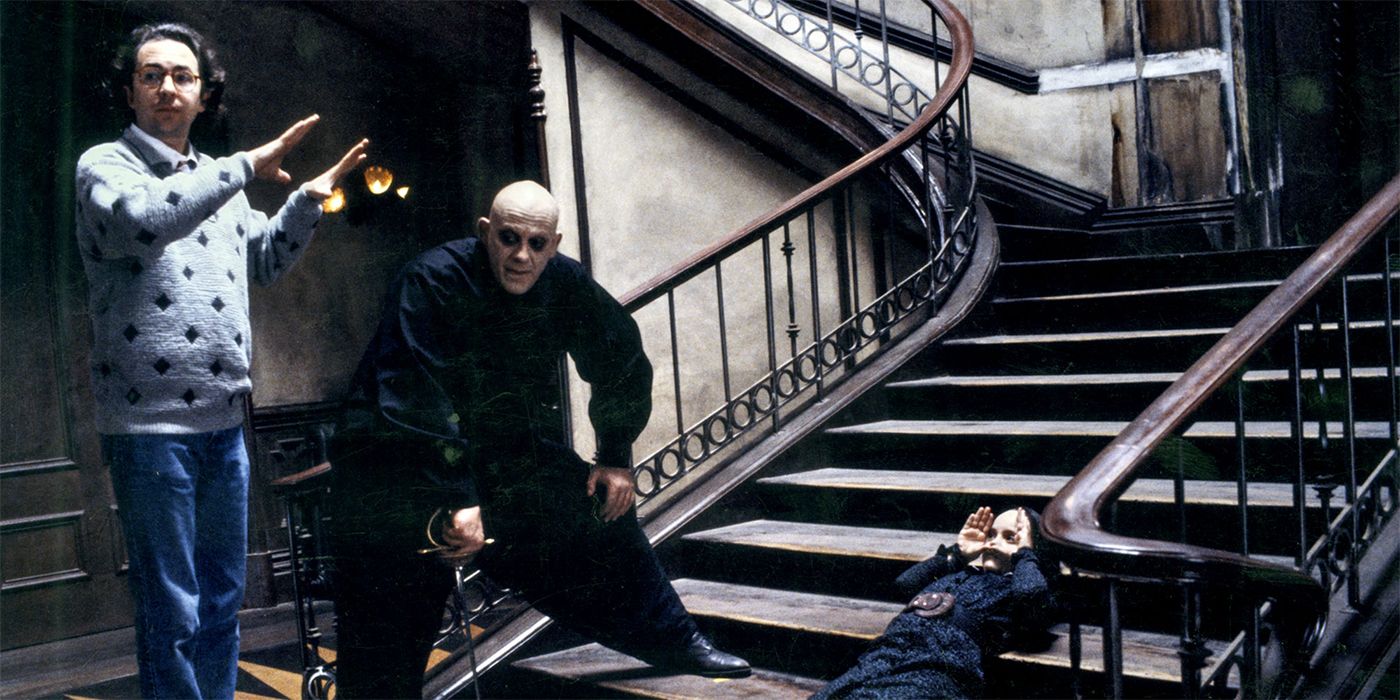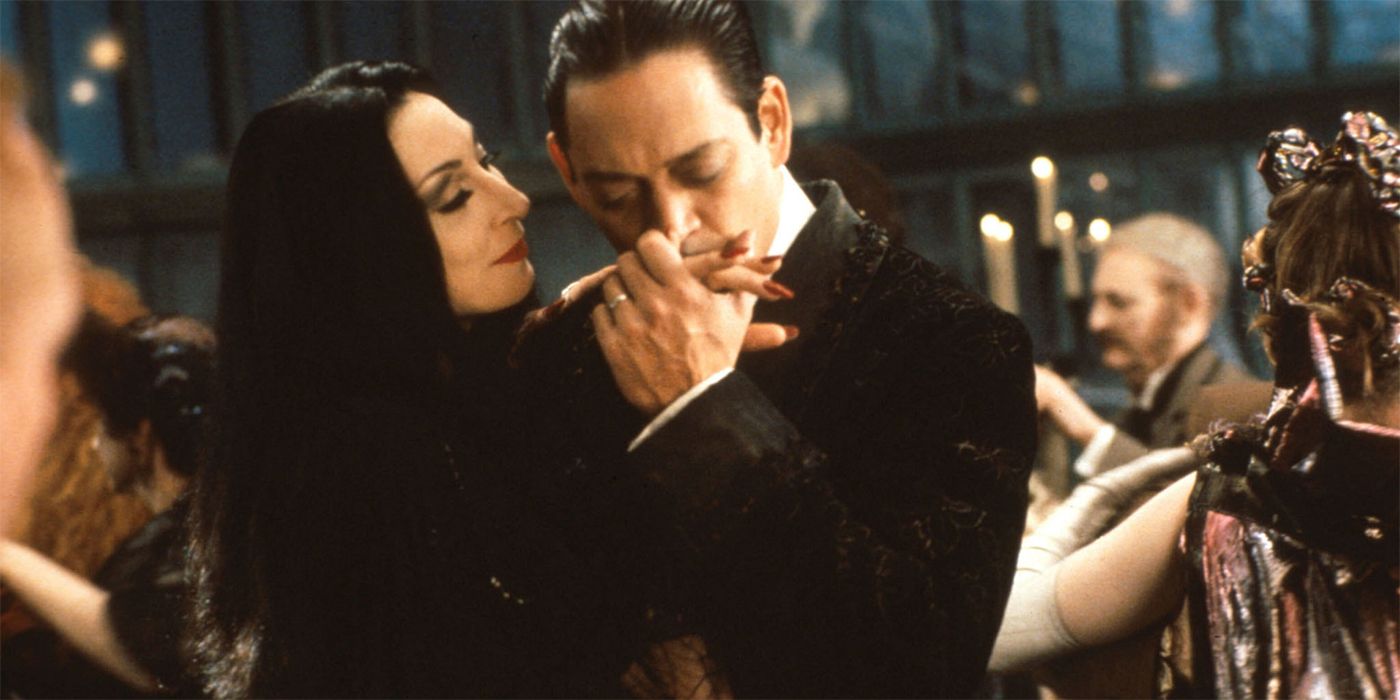It's a big year for 1991's The Addams Family, which celebrates its 30th anniversary with a special release of both the original theatrical version and a never-before-seen “More Mamushka!” version from Paramount Home Entertainment, which comes out October 19. The remastering was overseen by director Barry Sonnenfeld, who went on to direct other classics such as the Men In Black franchise after his expertise as a cinematographer in early Coen Brothers films landed him the Addams Family gig.
The iconography and tone set by Sonnenfeld all those years ago - inspired by the original cartoons of creator Charles Addams, of course - lives on through the present day. This year alone has seen the animated Addams Family 2 sequel return to the same themes of "what makes an Addams" first touched on in 1991 with Uncle Fester, as well as the announcement that Tim Burton would be helming Netflix's Wednesday live-action series.
Sonnenfeld sat down with Screen Rant to walk through some of the more memorable changes from earlier drafts of the script, as well as what he learned about directing from his love of cinematography and how he came to appreciate actors as collaborators.
Screen Rant: What is it about The Addams Family that you think captures the American consciousness? Why do we love them so much and always go back to their stories?
Barry Sonnenfeld: I think it's because it's quirky and it's dark, but not mean. I think that the first one is very romantic, and I also love that Gomez and Morticia are kind of like perfect parents.
I remember when the movie came out, all the reviewers would say, "Addams Family, the most dysfunctional family ever." No, they're the most functional family. The parents love their children unconditionally, they love each other passionately, and they allow their children to make mistakes - like use the wrong method to electrocute their brother or whatever.
I think people enjoy both how loving the family is, but how quirky and dark they are too.
I feel like that combination comes into play throughout different projects you've worked on because you're great at combining two very different aesthetics. Would you say that getting to direct Addams Family early on helped shape the trajectory of your career or any aesthetics that you used afterward?
Barry Sonnenfeld: I think I created those aesthetics earlier as a cinematographer, even shooting the first three Coen Brothers movies or Throw Momma From The Train. Early on, I decided that the camera can be used as more than just a recording device. My camera is very active but often tells the audience where the joke is.
I will say growing up with the New Yorker cartoons taught me a lot about comedy as well, in a weird way, because Charles Addams would do these drawings where it would take you 15 seconds to figure out where the joke was. The Addams Family is on the roof, they have this cauldron - oh, wait, there are carolers below, and they're gonna pour boiling oil on them.
I learned a lot as a cinematographer about how I want to frame things. And I always want actors to talk quickly.
How did your work as a cinematographer before this inform your work as a director, when you're now talking to cinematographers after having been one yourself. How do you talk to actors after approaching them from a different angle before?
Barry Sonnenfeld: As a cinematographer, I always liked hanging out with actors, but I didn't really like working with them. They would rehearse things one way, and you would light based on the rehearsal. Then they'd come back, and now they're looking that way. So, I never embraced actors as being helpful.
And then when I was asked to direct Addams Family, I looked at other cinematographers who had tried to become directors. In every case, they had only directed one movie, and then went back to cinematography. And I discovered the reason that none of them succeeded is that they all moved their camera operator up to being the DP; they didn't really want to give up the camera.
So, when I had a chance to direct, I decided to find a cameraman who was so good that I would never ever say, "Shouldn't that light be over there?" I hired Owen Roizman, an Academy Award-nominated cinematographer so that I would be pushed away from the camera. I still designed all the shots, but I never helped Owen light or told him how to lay track or anything. And I think that was really helpful because it forced me to work with those people that I was so afraid of, which were the actors.
To think, "How do you talk to actors? What do you say? How do you get them to do certain things?" That was an interesting learning experience, and what I learned was that in many ways actors need the same thing your children do: unconditional love, protection, consistency of tone. Some actors and some children need a firmer method, and others need to be let alone - and you learn that, so now I love actors. Love them!
And that's what I learned on Addams Family: that actors can be your friends.
I remember reading about the script not necessarily being in the shape that one would want it to be when you took it on. What was it like to craft this new vision or to put yourself into this film while it was still a work in progress?
Barry Sonnenfeld: Well, you never want to shoot a work in progress. You want to get the script right before you start shooting, and that doesn't always happen. I've had experiences where studios have wanted to back into a release date, and we've made movies before we should have.
But in the case of The Addams Family: the ending of the original Addams Family that we're now releasing for our 30th anniversary literally had Fester at the end still being an imposter, and Gomez saying to Fester, "You know what? I know you're an imposter, but family is a state of mine. It has nothing to do with genes or blood. Welcome to our home." And that was the ending of The Addams Family that we had at our first table read where all the actors sit around.
We got done, and Scott Rudin and myself and the guy who we brought in to rewrite the whole script, Paul Rudnick - who then wrote Addams Family Values - were all pleased. But the actors all huddled on the other side of the room, and they decided to make Christina Ricci, the nine-year-old, their spokesperson. She came back to the table and said, "We hate the ending. We won't do this ending." I said, "What do you mean?" And Christina went on with bullet points, like it was a PowerPoint presentation 30 years ago, explaining all the reasons why Fester had to be the real Fester: the audience wouldn't be satisfied with that, they'd still wonder, "Is Fester still out at the Bermuda Triangle? How could Gomez just forget his love of his real brother?"
She was so articulate that Scott Rudin and Paul Rudnick and myself went, "Jesus, we're gonna have to change this ending." We did it because Christina was so articulate, and thank God she was because I think she's right. The ending that Scott and Paul and I liked was an intellectually satisfying ending, but not an emotionally satisfying ending. Thank God Christina was so articulate that we changed it.
But I will say, there's not a lot of improv on the set. We get the script right, and then you have the actors say those words. It was all designed within an inch of its life with storyboards and shot lists, and in pre-production, I'd say, "That window needs to be exactly opposite the door, because I want the camera to go through the door, out the window, down the thing." Things like that were all planned in pre-production.
Looking back over these last 30 years, and the first two Addams Family films, what were you proudest of in terms of your contribution to the family's legacy?
Barry Sonnenfeld: For me, directing is all about figuring out the tone and maintaining the consistency of tone. And what I'm proud of is that Addams Family and Addams Family Values feel tonally in the world of the Charles Addams drawings. Not in the world of the television show, which was jokey.
I'm proud that we stuck with Angelica [Huston] and Raul [Julia] when the original studio wanted Cher, for instance, to be Morticia. She might have been good, but all I know is that Angelica is kind of perfect.
What I'm proud of is that the tone of those two movies are very loving, very funny, very emotional. But the comedy is comedy that the audience finds, not comedy that we've forced upon you with punch lines.
I'm very excited for the new content in the Blu-ray to celebrate.
Barry Sonnenfeld: Yeah, putting back the entire "Mamushka" makes me feel really happy because Raul was so good in that scene.
The Addams Family arrives on Digital 4K Ultra HD for the first time October 19, and debuts on 4K Ultra HD Blu-ray as well as a remastered Blu-ray November 9.



